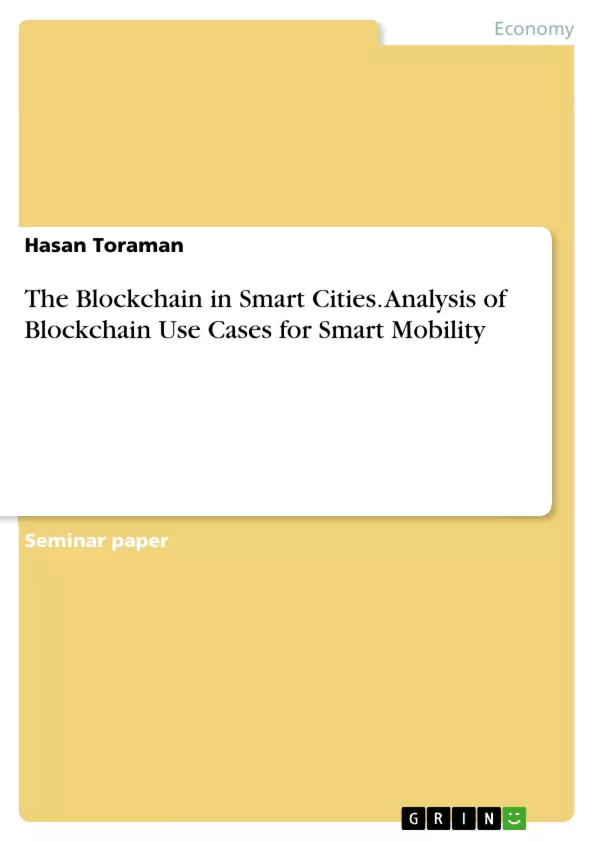In this paper, the author analysed the potential of Blockchain in smart mobility. In my research, he has focused on four areas of smart mobility being Vehicular Data sharing, Mobility as a Service, VANET as well as Transport and logistic. In order to give the reader basic information, firstly he gave a definition of Blockchain and Smart mobility, then we moved onto the above-mentioned four areas. At first, we explained the goal and the current status of the system, which problems it possesses and how Blockchain can fix these problems. In the end of his paper, he summarized the main findings and point out the weaknesses of Blockchain and why it can be challenging to implement it in this area. Further, there is also a proposed possible solution to current lack of information in order to give a final review to the potential of Blockchain in smart mobility.
Inhaltsverzeichnis (Table of Contents)
- Introduction
- Fundamentals
- Blockchain
- Background
- Ledger
- Transaction
- Consensus Models
- Weaknesses of Blockchain
- Smart City and Smart Mobility
- Background Information
- Smart mobility
- Blockchain
- Research Method
- Result
- Vehicle Data Sharing with Blockchain
- Mobility as a Service
- Business logic automation
- Data and Transaction Records
- Token based incentivization
- Transaction automation
- Identity Management
- Vanets
- Perceptual layer
- Edge computing layer
- Service layer
- Blockchain in Logistics and Transport
- Discussion
Zielsetzung und Themenschwerpunkte (Objectives and Key Themes)
This seminar thesis explores the potential of Blockchain technology in the context of smart mobility. The paper investigates four key areas of smart mobility, namely: Vehicular Data Sharing, Mobility as a Service, VANET, and Transport and Logistics. The thesis aims to analyze the potential of Blockchain to address the challenges and problems present in these areas.
- Exploring the potential of Blockchain in smart mobility
- Analyzing the strengths and weaknesses of Blockchain in various smart mobility use cases
- Identifying key challenges and opportunities related to implementing Blockchain in smart mobility
- Examining the potential of Blockchain to enhance data security, efficiency, and transparency in smart mobility systems
- Addressing the privacy and security considerations associated with Blockchain adoption in smart mobility
Zusammenfassung der Kapitel (Chapter Summaries)
The first chapter introduces the topic of Blockchain in smart mobility and highlights the increasing need for secure and efficient data management in this domain. The second chapter provides a foundation by explaining the concepts of Blockchain and Smart Cities, emphasizing the role of smart mobility within smart cities. The third chapter outlines the research methodology used in the thesis. Chapter four focuses on the main findings, analyzing the use cases of Blockchain within each of the four smart mobility areas identified. This includes exploring the application of Blockchain for vehicular data sharing, mobility as a service, VANETs, and logistics and transport.
Schlüsselwörter (Keywords)
The central focus of this thesis lies in the intersection of Blockchain technology and smart mobility. The key terms and concepts explored include: Blockchain, Smart City, Smart Mobility, Vehicular Data Sharing, Mobility as a Service (MaaS), VANET, Transportation and Logistics, Data Security, Privacy, and Decentralization.
- Quote paper
- Hasan Toraman (Author), 2020, The Blockchain in Smart Cities. Analysis of Blockchain Use Cases for Smart Mobility, Munich, GRIN Verlag, https://www.grin.com/document/1064199



